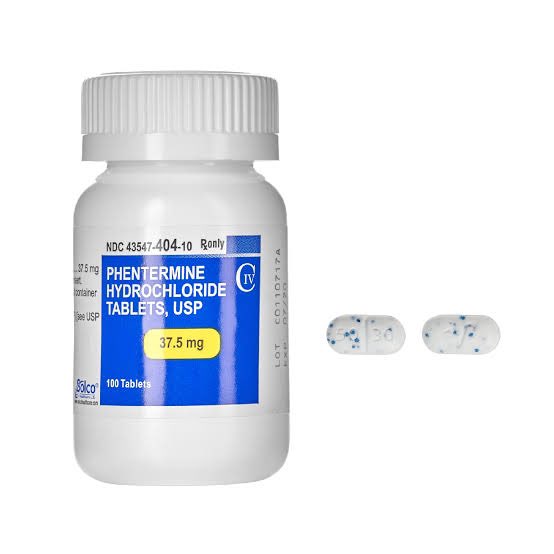How to Get a Phentermine Prescription From An Doctor Online

What is Phentermine?
Phentermine is a prescription medication that belongs to a class of drugs known as sympathomimetic amines. It is primarily used as an appetite suppressant and is prescribed as a short-term treatment for weight loss in individuals who are obese. Phentermine is typically prescribed in combination with diet and exercise to aid in weight reduction.
The exact mechanism of action of phentermine is not fully understood, but it is believed to work by suppressing appetite through the release of certain chemicals in the brain that affect hunger and satiety signals. By reducing appetite, it can help individuals consume fewer calories and promote weight loss.
Phentermine is intended for short-term use due to its potential for dependence and abuse. It is typically prescribed for a few weeks or months to jumpstart weight loss efforts in individuals with obesity who have not been able to lose weight through lifestyle changes alone.
It is important to note that phentermine is a controlled substance due to its potential for misuse and abuse. Common side effects of phentermine include increased blood pressure, elevated heart rate, insomnia, restlessness, dry mouth, and constipation. Phentermine should only be taken under the guidance and supervision of a healthcare professional, and it is not suitable for everyone, particularly individuals with certain medical conditions or those taking certain medications. In this article, we shall be taking a look at online doctors who prescribe phentermine and how to legally get a phentermine prescription online.

How to Get a Phentermine Prescription From a Doctor Online
Obesity is a prevalent health concern affecting millions of individuals worldwide. For individuals struggling with weight loss, prescription medications like phentermine can offer assistance in conjunction with lifestyle changes. In recent years, the availability of telemedicine and online healthcare services has made it possible to obtain prescriptions remotely. Here is how to get a phentermine prescription from a doctor online:
1. Research and Select a Reputable Online Healthcare Provider: The first step is to research and choose a reputable online healthcare provider that offers virtual consultations and prescriptions. Look for providers that are licensed, have qualified healthcare professionals, and follow legal and ethical guidelines. Read reviews, check their website for information about their services, and ensure they comply with relevant regulations.
2. Complete an Online Consultation: Once you have chosen a suitable online healthcare provider, you will need to complete an online consultation. This typically involves filling out a detailed questionnaire regarding your medical history, current health status, and weight loss goals. Be honest and thorough in your responses to ensure accurate assessment by the healthcare provider.
3. Discuss Your Weight Loss Goals and Medical History: During the online consultation, it is essential to discuss your weight loss goals and provide a comprehensive medical history. Mention any relevant medical conditions, previous weight loss attempts, current medications, allergies, or any other pertinent information. This helps the healthcare provider assess your eligibility for phentermine and ensures your safety.
4. Physical Examination: While an online consultation cannot replace an in-person physical examination, the healthcare provider may ask for certain measurements or request additional information to evaluate your health status. This may include providing your height, weight, waist circumference, or recent laboratory test results. Cooperate with the healthcare provider to facilitate an accurate assessment.
5. Follow Professional Recommendations: Based on the information provided, the healthcare provider will evaluate your eligibility for phentermine and formulate a personalized treatment plan. They may recommend lifestyle modifications, dietary changes, exercise routines, or other weight loss strategies in addition to prescribing phentermine. It is crucial to carefully follow their recommendations for optimal results and safety.
6. Prescription and Medication Dispensation: If the healthcare provider determines that you are a suitable candidate for phentermine, they will issue an electronic prescription. Ensure that you understand the prescribed dosage, duration, and any specific instructions or precautions. The provider may also provide guidance on potential side effects, monitoring, and follow-up consultations.
7. Regular Follow-Up and Monitoring: Prescription medications, including phentermine, require regular monitoring and follow-up consultations to assess progress, monitor side effects, and adjust the treatment plan as needed. Online healthcare providers may offer follow-up consultations through video calls or secure messaging platforms. Attend these appointments to receive ongoing support and ensure your safety.
Conclusion
Obtaining a phentermine prescription from a doctor online can be a convenient option for individuals seeking medical assistance for weight loss. However, it is crucial to prioritize safety, responsible use, and medical supervision throughout the process. Remember to choose a reputable online healthcare provider, provide accurate and honest information during the consultation, and follow the recommendations and instructions provided by the healthcare professional. By combining the use of phentermine with a healthy lifestyle, including a balanced diet and regular exercise, you can maximize your weight loss efforts and achieve long-term success in a safe and sustainable manner.





